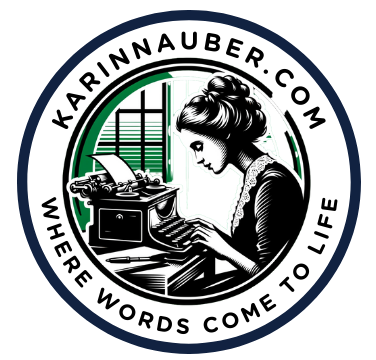
I thought today we would go back to looking at writing prompts. This time we will look at five particular prompts for writing romantic fiction.
Romance novels and stories are one of the top-selling pieces of fiction because, in my humble opinion, almost everyone wants a fairytale love story. We want to find our prince charming or our damsel in distress. We want love in our lives!
Romantic writing prompts can be game-changers when crafting unforgettable love stories. For aspiring and seasoned writers alike, these prompts serve as a launchpad for igniting creativity and exploring new dimensions of romance. Whether you’re looking to find inspiration for a new tale or to breathe life into an ongoing project, romantic prompts are your go-to tools.
There’s something magical about the way love stories captivate our hearts and minds. They remind us of the beauty of human connections, the thrill of passion, and the sweetness of togetherness. Creating these stories, however, isn’t always straightforward. Sometimes, a little nudge in the right direction is all it takes to get the creative juices flowing.
What you can expect up ahead are prompts specifically designed to inspire. These aren’t generic scenarios but curated ideas aimed at sparking that perfect love story. Each prompt encourages you to think about characters, settings, and plots in a way that makes your story resonate with readers.
In the following sections, you’ll find five distinctive romantic writing prompts to help you kickstart your story. Each one is crafted to allow endless possibilities and imaginative storytelling. Plus, I’ll share some useful tips on how to bring those love stories to life, ensuring your readers are hooked from the first word to the last. So, get ready to dive into a world of romance and let your creativity run wild!
Five Engaging Romantic Writing Prompts

Serendipitous meeting in a quaint bookshop. Imagine two strangers perusing through books in a cozy, tucked-away shop. Their hands simultaneously reach for the same rare edition, leading to a charming conversation. What’s their story, and how does this moment change their lives?
A love letter found in an old attic. While cleaning out an ancestral home, someone stumbles upon a bundle of love letters from decades past. The letters reveal a secret romance and inspire the finder to search for the story’s ending. What do the letters say, and how do they affect the present?
Bonding over music at a festival. Picture a vibrant music festival, where two people meet while enjoying their favorite band. They quickly bond over their shared music tastes and spend the night dancing and talking. What challenges do they face, and where does their story lead them?
Rekindling romance at a high school reunion. Years after graduation, two former classmates meet again at a reunion. Old feelings resurface as they reminisce about their school days and the paths they’ve taken since. What memories come up, and can they revive their past romance?
Chance encounter during a city blackout. A sudden city-wide blackout leaves two strangers stranded in an elevator. They connect as they navigate the dark and deserted city streets together. What conversations do they have, and how do they help each other through the night?
Tips for Writing Effective Love Stories
 Creating believable characters is essential. Characters should feel real and relatable with their flaws and strengths. Give them backstories that readers can connect with. It’s not just about looks—focus on their emotions, motivations, and growth throughout the story.
Creating believable characters is essential. Characters should feel real and relatable with their flaws and strengths. Give them backstories that readers can connect with. It’s not just about looks—focus on their emotions, motivations, and growth throughout the story.
Building emotional connections between characters is what makes a love story unforgettable. Show their chemistry through dialogue, shared experiences, and subtle gestures. The way they look at each other, the inside jokes, and even the conflicts—everything should reflect their emotional bond.
Using settings effectively can elevate a love story. Think about how different environments affect the mood and the characters’ interactions. Whether it’s a bustling city, a serene countryside, or a cozy coffee shop, the setting should complement your narrative and amplify the romance.
Balancing conflict and resolution keeps readers engaged. Relationships aren’t always smooth, and that’s okay. Introduce challenges that your characters must overcome together. These conflicts should test their bond and ultimately make their relationship stronger by the end.
Revising and seeking feedback is a vital part of the writing process. Don’t be afraid to rewrite scenes or change aspects of your story if they don’t feel right. Sharing your work with trusted friends or writing groups can provide new perspectives and valuable suggestions.
